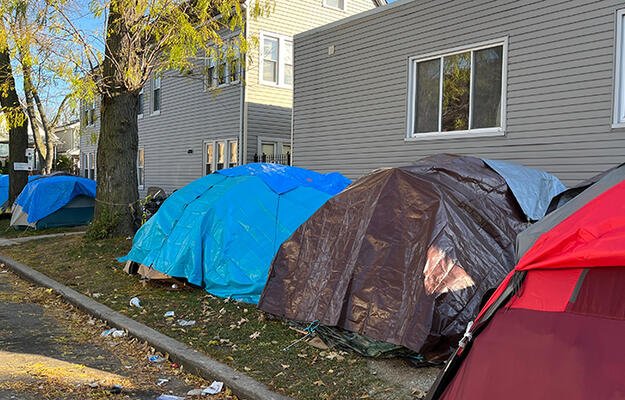
Engaging Hospitals and Health Systems in Affordable Housing Investment
- Title:
- Engaging Hospitals and Health Systems in Affordable Housing Investment
- Author:
-
Kathryn Reynolds, Eva H. Allen, Martha Fedorowicz, Joycelyn Ovalle
- Source:
-
Urban Institute
- Publication Date:
-
2019
Tackling the affordable housing crisis will require actors from every sector to finance housing development for low- and moderate-income people. The Urban Institute developed a guide to help nonprofit hospitals and health systems understand how their institutional assets and prestige can support affordable housing development. The guide also offers practical information and encouragement to start investing in much-needed affordable housing.
The guide is informed by Urban’s research examining current practice and the motivations, opportunities, and barriers nonprofit hospitals and health systems face when initiating and broadening investments in housing development. Its findings suggest that although nonprofit hospitals and health systems may be increasingly aware of and involved in addressing the housing concerns of their patients and communities, few invest in construction and rehabilitation projects.
This guide presents key concepts and strategies for designing and implementing housing development projects, complemented by examples and supplemental resources. It first guides readers through steps and considerations when exploring and formulating an appropriate affordable housing investment strategy, including assessing community needs, identifying target populations, engaging community members, examining the policy context, selecting partners and internal champions, and measuring progress. It then describes ways nonprofit hospitals and health systems can support and finance affordable housing projects. Hospitals and health systems can use their financial position to enhance credit to lower borrowing risks and costs; provide in-kind resources, such as land and staff time, to help affordable housing development; and provide capital (as a grant or a direct loan) to cover construction or rehabilitation costs.
Key findings
- Nonprofit hospitals are largely aware of housing needs. Whether through a community health needs assessment or other means, nearly all hospitals in the study identified housing instability, housing affordability, or poor housing conditions as concerns in their communities or among their patients.
- Hospitals say improving health outcomes is their primary concern, and they want evidence that housing-related initiatives can improve those outcomes. Overwhelmingly, hospitals were motivated to undertake housing initiatives to improve health outcomes and reduce unnecessary emergency room visits and avoidable hospitalizations. To that end, hospitals indicated that seeing more evidence that housing-related initiatives improve health outcomes and reduce costs could encourage them to increase their investments in such activities.
- Hospitals see housing as a platform for addressing social determinants of health but are concerned about the time and resources needed. Almost all hospitals in the study believe housing is a fundamental resource that can support health and well-being, and about half think the health care sector should be involved in developing housing or providing rental assistance. But many perceive housing-related projects as risky, resource-intensive efforts that require a significant amount of time before they can achieve health and cost outcomes, if at all.
- Hospitals most often dedicate health services, administrative capabilities, and political leverage to support housing initiatives. Hospitals most often reported providing medical care to people experiencing homelessness and offering clinical services and food assistance at affordable housing sites.
- Hospitals seem less interested in direct financial investments in housing. Many hospitals are not interested in pursuing direct housing investments, such as donating or swapping land to allow for affordable housing development, providing low-interest loans or investments to rehabilitate or build affordable housing, or developing employee housing.
Implications for action
- Although investing in housing construction and rehabilitation is new for most hospitals and health systems and survey results indicate less overall interest than other housing-related activities, the report’s authors believe hospitals’ institutional assets, focus on health outcomes, and position as anchor institutions make them well positioned to invest in affordable housing.
- The authors suggest that nonprofit hospitals and health systems follow eight steps when developing an affordable housing investment strategy: assess social determinants of health in the community, identify the target population or community, engage the community, understand the policy context, determine affordable housing investment and support strategies, select implementation partners, identify internal champions, and measure progress.
- Nonprofit hospitals and health systems are well positioned to fill the financing gap that often prevents affordable housing from being built or rehabilitated. Hospitals can fill the gap by donating land or buildings or swapping land with a housing developer; using their financial position to enhance credit, lower borrowing costs, or provide a direct loan for construction, renovation, or rehabilitation; and contributing staff time or capital to encourage others to invest in affordable housing development.
Photo by Spiroview Inc./Shutterstock


